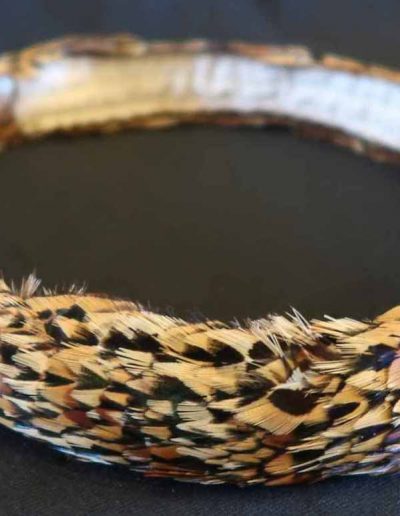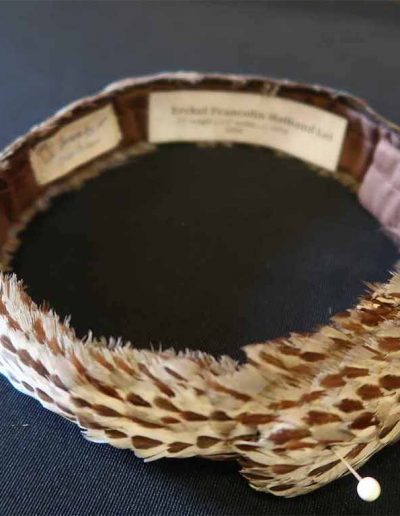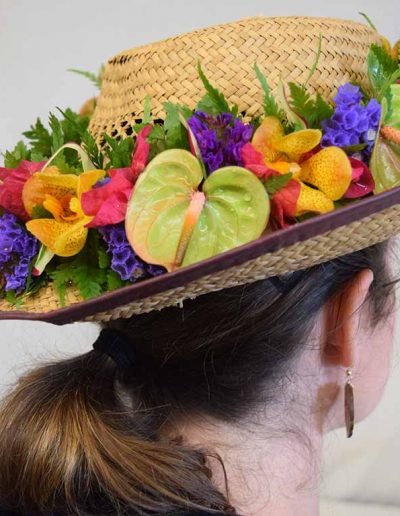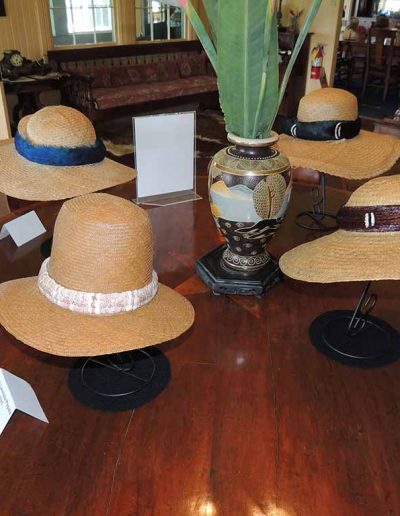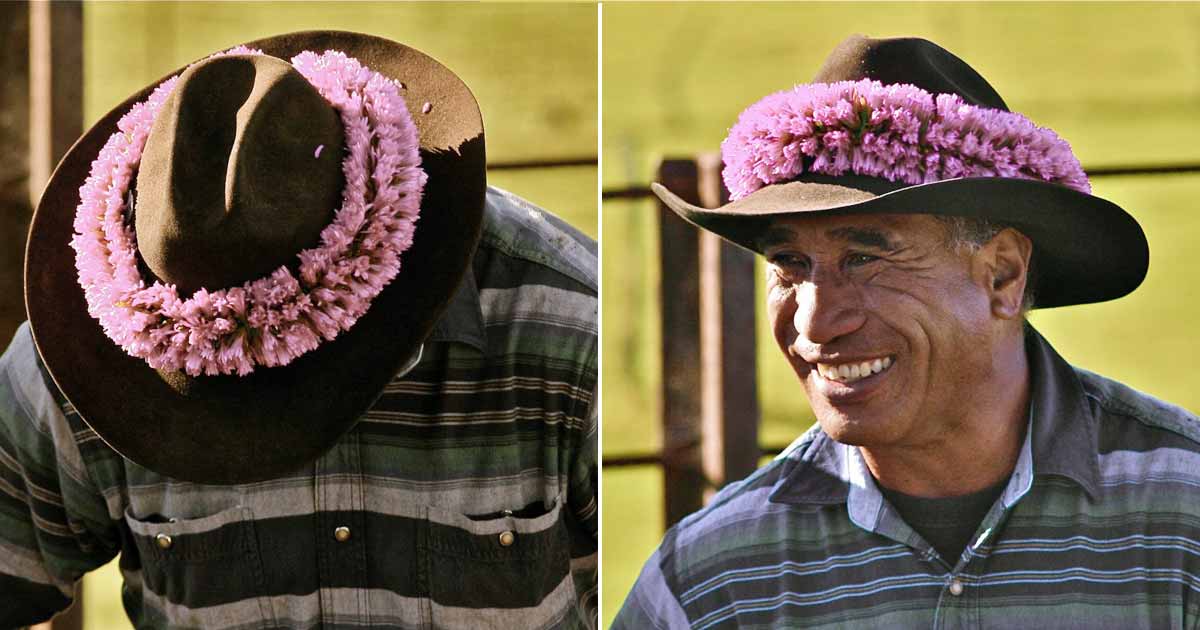
Almost 100 years ago, writer Don Blanding had an idea that he thought was good enough to share with his bosses, editors of the Honolulu Star-Bulletin.
“So, the bright idea that I presented was, “Why not have a Lei Day?” Let everyone wear a lei and give a lei. Let it be a day of general rejoicing over the fact that one lived in a Paradise. Let it be a day for remembering old friends, renewing neglected contacts, with the slogan “Aloha,” allowing that flexible word to mean friendliness on that day.” (Don Blanding, quoted in LeiDay.org)
Blanding’s co-worker Grace Tower Warren suggested May first as the date, and coined the slogan “May Day is Lei Day in Hawai‘i.” The first celebration took place in 1928 at the Bank of Hawai‘i, and May Day became an official celebration in 1929. In the years that followed, May Day bloomed into a string of festivities—lei-making contests, parades, concerts, the crowning of May Day Kings and Queens, and more—all across the islands.
Maybe it doesn’t fit the image of a rough and tumble, “macho” cowboy, but Lei Day means something to paniolo too.
“Paniolo always wore lei,” says actor, storyteller, playwright Moses Goods (“Paniolo Stories and Songs from the Hawaiian Cowboy.”) “The men on these horses could go to these remote areas in the mountains and pick flowers and vines and plants you couldn’t normally get to. They would go to those places and get these beautiful flowers and make lei and wear them. They always took time to connect with the beauty around them even though they were these tough rugged men.”
In a 1990 interview with the Deseret News, revered lei maker Marie MacDonald said, “Westerners are also often uncomfortable with the idea of men wearing flowers. For the Pacific man, the more flowers the better… One paniolo summed it up when he said, ‘We like to show off. The girls all look at you when you wear a lei!’”
Paniolo wore lei for special occasions; they draped long, elaborate lei on horses for parades and rodeo exhibitions; and they often wore lei papale to hold their cowboy hats in place. Lei papale can be made with any kind of flower or greenery, but the crimson-color ʻōhiʻa lehua is a favorite, especially for Hawai‘i Island cowboys and cowgirls. Shells and nuts can be used, and some of the most spectacular hat lei are crafted from bird feathers.
Parker Ranch’s own Tsuji Kaiama is a “living treasure” and master of the art of lei hulu papa, feather hat bands. Rather than the traditional Hawaiian method of plucking and stringing the feathers one by one, Tsuji would use portions of the bird’s pelt, which keeps feathers perfectly aligned and gently flexible. When the paniolo went hunting for game birds like pheasant, they brought the birds to Tsuji, who skinned them, carefully preserved their pelts, and gave the meat back to the cowboys.
What’s the best way to preserve and protect lei hulu papa? Tsugi’s recommendation is “keeping them rolled up in a cigar box with a little tobacco to chase away the bugs. Or, if you prefer leaving the lei on your hat, keep the hat in a plastic bag with several moth balls.” This, according to a 1997 Waimea Gazette article by Patti Cook.
Tsuji handed down her skills and intricate techniques to her niece Leonetta Kimura Mills, who carries on the beautiful art of lei hulu papa. “The cowboys wore flower lei, feather lei and it’s amazing because of the kind of work they do. But they would come home with the lei still on their hats, just maybe not the way it was when they left,” said Mills in a 2017 West Hawaii Today article by Jan Wizinowich. “It all started with the cowboys.”

